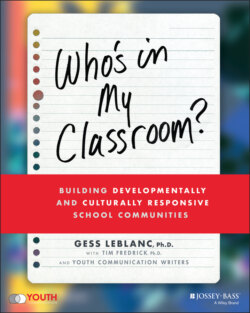Читать книгу Who's In My Classroom? - Tim Fredrick - Страница 17
Growing Recognition of Culturally Responsive Education
ОглавлениеSchool districts increasingly recognize the connection between cultural responsiveness and academic achievement. For example, New York State recently adopted its Culturally Responsive and Sustaining Education Framework. The New York State Education Department (NYSED) states that, “The goal of the CR-S framework is to help educators design and implement a student-centered learning environment that affirms racial and cultural identities and fosters positive academic outcomes, develops students’ abilities to connect across culture, empowers students as agents of social change, and contributes to their engagement, learning, growth, and achievement through the cultivation of critical thinking.”29
A New America report published in 2019 noted that, “All 50 states embed some combination of culturally responsive teaching competencies into their standards.”30 But they found that many state standards are written in vague ways that do not provide teachers with sufficient guidance about how to meet the standards:
Forty-seven states widely expect teachers to exhibit high expectations for all students, though no state explicitly addresses how low expectations are commonly associated with race, class, culture, language, gender and sexual orientation, or disability status.
Similarly, New York asks teachers to be “responsive to the economic, social, cultural, linguistic, family, and community factors that influence their students’ learning,” yet the state does not provide an additional element that captures how teachers are supposed to be “responsive to” students’ “cultural factors.” Rhode Island likewise requires teachers to “design instruction that accommodates individual differences (e.g., stage of development, learning style, English language acquisition, cultural background, learning disability) in approaches to learning,” but it provides no other elements to elaborate on this competency. Reasonably, a lack of specificity makes it difficult for educators to act upon the expectations.31
These findings make two things clear: States across the country are requiring teachers to demonstrate teaching competence in ways that are responsive to the developmental and cultural needs of students, and few states provide the rationale and support that make it possible for teachers to do so. That's why we wrote this book.
